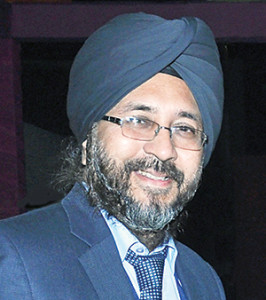
There is an increase demand at the domestic and international level for cost effective healthcare, says Dr H S Chhabra, Chief of Spine Services & Medical Director, Indian Spinal Injuries Centre, Vasant Kunj, in an interview with Romiya Das of Elets News Network (ENN)
How do you see the healthcare infrastructure market in India compared to global market?

Healthcare industry in India is experiencing a growth owing to the factors such as strong coverage, expanding services and increase in expenditure by public as well private players. Additionally, factors such as rise in income levels, growing population of elderly people, changing demographics, disease profiles and the shift from chronic to lifestyle diseases has further made the healthcare as one of Indias largest sectors – both in terms of revenue and employment. According to a data released by the Department of Industrial Policy and Promotion (DIPP), the hospital and diagnostic centres attracted foreign direct investment (FDI) worth US$ 2,793.72 million between April 2000 and January 2015. Taking into account the requirement of 600,000 to 700,000 additional beds over the next five to six years in the country, experts view it as a potential opportunity for the growth of the sector by more than US$ 25-30 billion.
What are your views on Hospital Information Systems in India?
Hospital Information System in India is in growing phase, it has picked up pace in metropolitan cities and tier I cities. The hospitals are customizing the modules at their end as per their needs and the service providers are working towards offering solutions to the newly arising queries of hospital managers. The challenge lies in bringing along the medical fraternity i.e. the clinicians and nursing personnel, who are not exposed to information technology to acclimatise their working from real paper to virtual tablet.

There is a dire need to come up with better policies and establishment of PPPs to address the issue of manpower shortage
What policies or regulations do you think are required to build a robust healthcare infrastructure in the country?
According to Central Bureau of Health Intelligence (CBHI), there are over 381 medical colleges. The medical education infrastructure in India has total admissions of 43576 per annum. Despite, there exists a shortage of manpower due to lack of opportunity, management and facilities. Additionally, the country is in dire need to come with better policy regulations and establishment of PPPs in order to manage the problem of manpower shortage. The government also needs to increase on healthcare from one per cent to at least 6 per cent in order to bring the sector in a comparable position with that of the western countries.
What are your upcoming projects?
Upcoming projects of HIS at ISIC are to manage patients crowd in OPD, ticket generation machine through Kiosk Machine where the patients will generate ticket themselves. We are also planning for blog postings through our intra-portal. To make bar code interfacing for each and every service, item and document and putting up of classified ads (for internal circulation only). Lab reports will be available on the web making it easily available to the patients to view and download. We will be integrating PACS with HMS to document entire data at one place. We are creating paperless environment through Google App built-in forms to send and receive thorough email.
Be a part of Elets Collaborative Initiatives. Join Us for Upcoming Events and explore business opportunities. Like us on Facebook , connect with us on LinkedIn and follow us on Twitter , Instagram.













